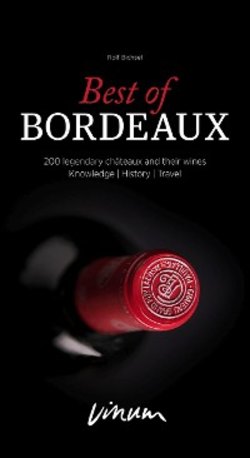Читать книгу Best of Bordeaux - Rolf Bichsel - Страница 24
Оглавление24
History New luxury
4 pence per full bottle), stopped with a cork (the use of which also gradually
came into fashion), left to mature for a while and served in delicate Venetian
crystal glasses rather than the drinking horns, pewter mugs or leather cups of
the common people. If left to mature for a while, this new wine gradually de-
veloped astounding smoothness, a well-balanced taste and a stunning bouquet
the like of which no one had ever experienced before. And to ensure that the
wine would not be confused with others and would become its own brand, it
was named after its producer and place of origin and ultimately transformed
into a luxury product with the clever suggestion that it might be of noble origin
and have bathed in the twilight of a cellar in a chateau owned by some ancient
aristocracy. But more on that later.
After the end of the English Civil War (1642–1650) London became the intel-
lectual and cultural capital of Europe, knocking Paris off the podium. Not even
the plague to which a fifth of the city's population fell victim in 1665 or the Great
Fire of September 1666 (which actually claimed very few lives but caused mas-
sive destruction) could not compromise this development: London had made it
to the top and was there to stay. Shortly after the Great Fire, the Pontacs opened
a tavern in the capital called the Pontac's Head which quickly became the best
eatery in the city. It served up French specialities and its own wine, and soon
anyone who was anyone was seen there. Although Jonathan Swift complained
that the wine was much too expensive at seven shillings a flagon, other intel-
lectuals such as the philosopher John Locke became veritable ambassadors for
the brand. Locke paid a visit to Haut-Brion in 1677, carefully examined its terroir,
studied cultivation techniques and set about solving the mystery as to why the
Pontacs' wine tasted so delicious that ‘the rich English would order it for any
price'. He also noted: ‘The wine of Pontac, so revered in England, is made on a
little rise of ground, lieing open most to the west. It is noe thing but pure white
sand, mixed with a little gravel. One would imagin it scarce fit to beare anything.'
And suddenly everyone wanted some, and the de Pontacs were able to sell Ho
Brian at ten or twenty times the price of standard claret, pay off their creditors
and a
ff
ord younger courtesans.
However, the competition never sleeps. What was just right for the de Pontacs
was sacred to the de Ségurs, de Rauzans or de Lestonnacs, and the Bordeaux
bourgeois (who were all also ship-owners and merchants, and often lawyers or
notaries and bankers and always city parliamentarians) thus triggered what you
might call a veritable cultivation war in Bordeaux. And when the gravel mounds
to the southwest, west and northwest of the city (what is now Pessac-Léognan)
were requisitioned and seemed particularly suitable for producing this new
style of French wine which the Brits called ‘new French claret', Bordeaux's
moneyed aristocracy simply purchased the endless hunting grounds of the Mé-
doc, now dried out by the Dutch. These were characterised by the numerous
